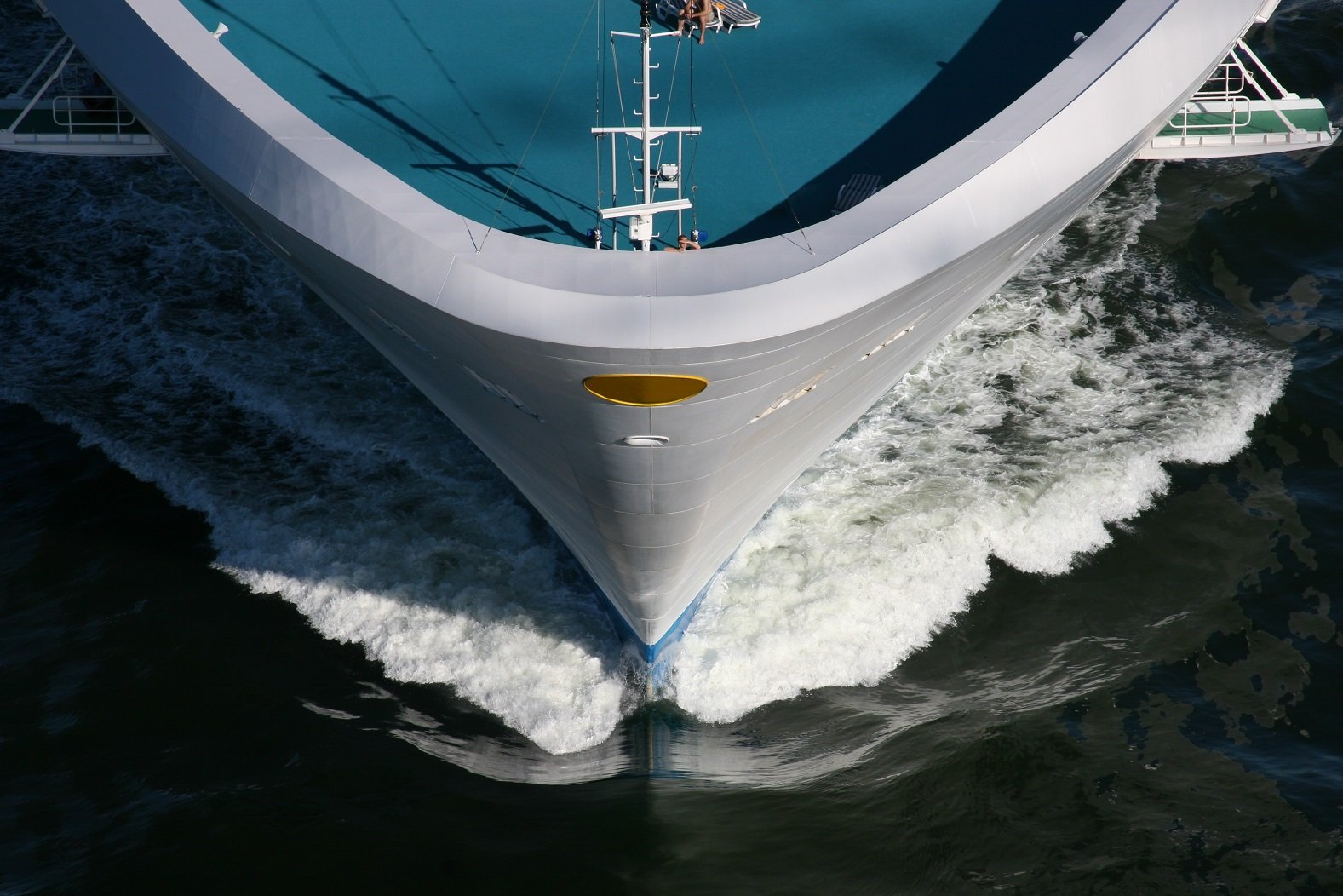Norwegian Cruise Line (NCLH 0.71%) has canceled all its cruises until Oct. 1. Carnival (CCL 1.62%) and Royal Caribbean (RCL 3.38%) have not done the same as both technically still have sailings on the books for August, but whether those will happen and/or what they will look like remains very much in doubt.
The hard reality is that cruise lines don't have approval from the Centers for Disease Control to head back to sea. They also don't have permission to land in most ports, and it's unclear when they will get either of those.
Cruises with limited passenger loads, testing, temperature checks, masks, and distancing measures that stop only at private islands may return. Cruising as we know it, however, won't return until there's a vaccine, a treatment, or the pandemic ends.

It's uncertain when cruise lines will be able to return. Image source: Royal Caribbean.
Where do cruise lines stand now?
All three major cruise lines have taken significant steps to protect liquidity. Employees have been furloughed and laid off, capital expenses have been pushed back, and marketing budgets have been eliminated. The problem is that it costs money to keep cruise ships operational. Carnival, for example, still burns roughly $1 billion each month to keep its ships in working order.
If cruising returns in the fall and gets somewhat back to normal next year, then all three of these brands are likely to make it through without filing for Chapter 11 bankruptcy protection. Loyal cruisers may return for short sailings with stops at private islands and social distancing while on board. That's not a profitable model for the cruise lines as many of those customers pay lower prices in general. While those limited sailings may break even or eke out a small profit, the overall business will still lose money.
Full disclosure: I'm an avid cruiser -- one of those customers who would take a low-cost or comped trip even with social distancing rules in place and with a limited itinerary. I cruise alone often, would happily just float in the ocean by myself on the Royal Caribbean private island, and I live with driving distance of a well-used cruising port.
Cruising isn't a rare thing or a special vacation for me, so getting to do it even in compromised form would still be relaxing. But a cohort of customers like me will not provide enough of a business for the cruise lines to operate. Customers like me get discounted or free cruises to fill up ships that are already profitable. When we become the core audience, that's a big problem for the cruise lines.
Is bankruptcy a danger?
While advance bookings show that people want to cruise, the reality is that low deposits, cheap prices, and newly liberal cancellation policies make those numbers meaningless. Cruise lines won't be able to make money (or stop losing money) until normal operations can return. Safety measures might allow for limited-capacity cruises which may cut losses, but even that seems doubtful.
Normal consumers -- not just insiders and loyalists -- need to be able to return for the cruise lines to hope to return to success. That's something that's further complicated by the fact that many longer cruises cater to senior citizens -- a group that's particularly vulnerable to the coronavirus.
Without a vaccine, viable treatment, or the eventual development of a herd immunity to this virus, it's simply impossible for a return to normal for the cruise industry. Any of those three things could happen, maybe even by the fall in some cases, but it's also very possible it will take much longer than that. That makes Chapter 11 bankruptcy protection filings a real risk for all three of these companies. None are likely to go out of business, but there are real threats to shareholder equity.








